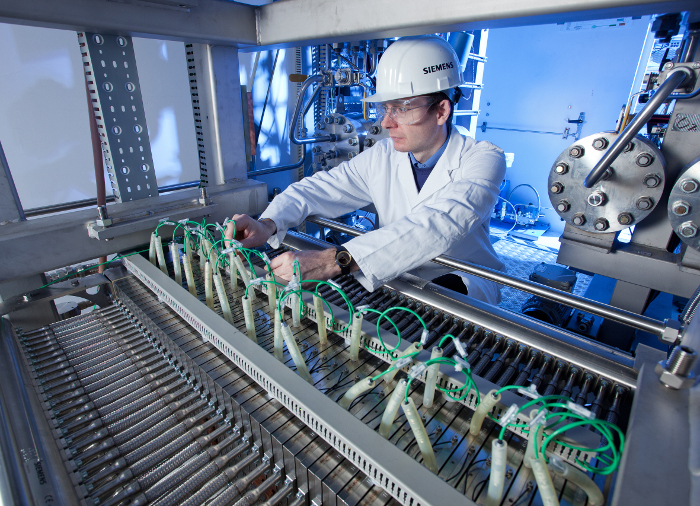In the latest of its green hydrogen funding announcements, the Australian Renewable Energy Agency (ARENA) has agreed to back feasibility studies for two massive projects in Queensland. The studies will look at the potential to use solar and wind-powered hydrogen produced via electrolysis to increase ammonia production at facilities which currently rely on gas as feedstock.
ARENA announced it was providing $1.9 million in funding to Queensland Nitrates (QN) to assess the feasibility of the construction and operation of a renewable ammonia plant at its existing facility near Moura. The consortium, led by QN and partners Neoen and Worley, proposes to use renewable hydrogen to supply 20% of the ammonia needs QN’ current ammonia requirements (i.e. 20,000 tonnes of ammonia from 3,600 tonnes of renewable hydrogen per year). The electrolysers would be powered by a hybrid supply of wind, solar and stored renewable energy from facilities owned and operated by Neoen. It is still unclear, however, if this would be the French developer’s existing or new projects.
Backed by $980,000 in ARENA funding, the second project proposes building a green ammonia facility at Intec Pivot’s existing Moranbah ammonia plant. The facility could potentially become the world’s largest green ammonia plant powered by renewable hydrogen featuring a solar farm of up to 210 MW along with a 160 MW hydrogen electrolyser. Dyno Nobel’s Moranbah facility currently operates an ammonia plant employing 50 people and manufactures more than 360,000 tonnes of ammonium nitrate annually for supply to mining customers. The study would help determine whether green hydrogen can be produced in a way that makes commercial sense to support expanding the Morandbah facility, Tim Wall, President Global Manufacturing Incitec Pivot, said in a joint statement with ARENA.
Both studies aim to determine the technical and economic feasibility of producing renewable ammonia at a commercial scale, helping to further progress the commercialisation of renewable hydrogen production for both domestic and international use. “Companies looking at creating hydrogen via electrolysis will help establish a local economy for hydrogen and ammonia production in Australia,” ARENA CEO Darren Miller said. “This is the first step in the country tapping into the huge potential of a renewable hydrogen export industry.”
ARENA has identified ammonia sector as a key user of hydrogen and one that represents a significant opportunity to deploy renewable hydrogen technologies. According to Bloomberg, over 50% of deliberate hydrogen production is used for ammonia. Noting that ammonia production is an energy-intensive industry that accounts for 1% of global emissions, Miller said that these projects could help the ammonia industry to reduce its emissions by switching to renewable hydrogen.
As momentum builds across the globe to advance green hydrogen, Australia is among the countries most favourably placed to turn hydrogen hype into real-world deployment. With a national hydrogen strategy,mooted as the roadmap to a potential $1.7 billion export industry, still in the works, South Australia, Western Australia and Queensland have already launched their own strategies to tap the hydrogen opportunity.
However, a report released last week by the International Renewable Energy Agency (IRENA) finds that integration of hydrogen into the energy transition will not happen overnight and electrolysis costs will not be halved until the 2040s. The Agency believes the production of hydrogen from renewables has the potential to deliver 19 exajoules of energy in 2050 and finds that some 16 TW of solar and wind power generation capacity – 120 exajoules – may be needed to generate green hydrogen or related products from electrolysis by that point.
This content is protected by copyright and may not be reused. If you want to cooperate with us and would like to reuse some of our content, please contact: editors@pv-magazine.com.









1 comment
By submitting this form you agree to pv magazine using your data for the purposes of publishing your comment.
Your personal data will only be disclosed or otherwise transmitted to third parties for the purposes of spam filtering or if this is necessary for technical maintenance of the website. Any other transfer to third parties will not take place unless this is justified on the basis of applicable data protection regulations or if pv magazine is legally obliged to do so.
You may revoke this consent at any time with effect for the future, in which case your personal data will be deleted immediately. Otherwise, your data will be deleted if pv magazine has processed your request or the purpose of data storage is fulfilled.
Further information on data privacy can be found in our Data Protection Policy.